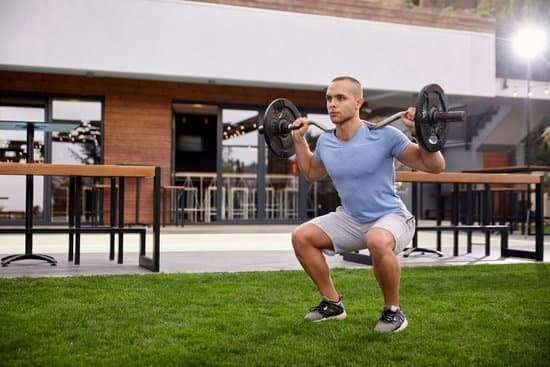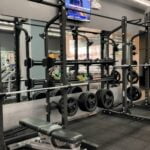When it comes to excelling on the football field, being physically fit is crucial for players to perform at their best. In this article, we will explore the best exercises for football fitness that can help players improve their overall performance and endurance on the field. From specific fitness requirements to recovery strategies, implementing a well-rounded fitness routine is essential for any aspiring football athlete.
Football is a demanding sport that requires strength, speed, agility, and endurance. The importance of fitness in football cannot be overstated, as it directly impacts a player’s ability to outperform opponents and sustain high levels of intensity throughout the game. By incorporating a variety of exercises that target different aspects of physical fitness, players can enhance their skills and stay competitive on the field.
From warm-up exercises to strength training routines, cardiovascular workouts, agility drills, and flexibility exercises, football players must focus on a comprehensive approach to their fitness regimen. With proper conditioning and recovery strategies in place, athletes can optimize their performance and reduce the risk of injuries during intense training sessions and competitive matches. Let’s delve into the specific exercises that are considered the best for enhancing football fitness and taking your game to the next level.
Importance of Fitness in Football
Football is a physically demanding sport that requires players to have high levels of fitness in order to perform at their best. The importance of fitness in football cannot be overstated, as it directly impacts a player’s ability to run, jump, sprint, tackle, and make quick decisions on the field. Without proper fitness, players may tire quickly, lose focus, and increase their risk of injury.
Enhanced Performance
Having good fitness levels can greatly enhance a player’s performance on the pitch. High levels of cardiovascular fitness allow players to run for longer periods without getting fatigued, making them more effective in both attacking and defending. Strength training improves power and explosiveness, which are essential for activities like jumping for headers or bursting past opponents with speed.
Reduced Risk of Injury
One of the key benefits of being fit in football is a reduced risk of injury. Players who have strong muscles and good flexibility are less likely to suffer from strains, sprains, and other injuries commonly associated with the sport. Additionally, having good core stability through exercises like planks can help prevent back injuries during tackles or collisions on the field.
Mental Toughness
Fitness in football is not just about physical conditioning; it also plays a significant role in mental toughness. Enduring grueling training sessions and pushing through fatigue builds mental resilience that can be crucial during tough matches.
Players who are physically fit tend to have higher confidence levels and are better equipped to handle pressure situations during games. Overall, focusing on the best exercises for football fitness is essential for players looking to improve their game and stay competitive at all levels of play.
Specific Fitness Requirements for Football Players
Football players need to possess a unique set of fitness qualities in order to excel on the field. The demands of the sport require a combination of strength, endurance, agility, speed, and flexibility. To meet these specific fitness requirements, players must engage in a variety of exercises that target each component effectively.
To improve their overall performance on the field, football players can benefit from incorporating a mix of strength training exercises, cardiovascular workouts, agility drills, and flexibility routines into their training regimen. These exercises not only help players build muscle strength and power but also enhance their endurance and speed, allowing them to outperform their opponents during games.
Some of the best exercises for football fitness include:
- Squats: This compound exercise targets multiple muscle groups in the lower body, including the quadriceps, hamstrings, and glutes. Squats help improve leg strength essential for explosive movements on the field.
- Interval training: High-intensity interval training (HIIT) is a great way to boost cardiovascular fitness and enhance stamina. Sprint intervals followed by short rest periods simulate game-like situations and improve overall endurance.
- Cone drills: Agility drills using cones are excellent for enhancing quickness and coordination. Players can practice sharp cuts, changes of direction, and acceleration to mimic game scenarios effectively.
By incorporating a comprehensive mix of these best exercises for football fitness into their training routine, players can optimize their physical capabilities and ensure they are prepared to perform at their peak level during matches.
Warm-Up Exercises for Football Fitness
Whether you’re a professional football player or just a casual weekend warrior, warming up before hitting the pitch is crucial to prevent injury and improve performance. Warm-up exercises for football fitness should focus on increasing blood flow to the muscles, enhancing flexibility, and preparing the body for the physical demands of the game.
Dynamic Stretches
Dynamic stretches are an essential component of any football warm-up routine. These stretches involve moving parts of your body through a full range of motion, helping to improve flexibility and mobility. Dynamic stretches such as leg swings, arm circles, high knees, and lunges can help loosen tight muscles and prepare them for the more intense activity ahead on the field.
Light Cardio
In addition to dynamic stretches, including some light cardiovascular exercise in your warm-up routine can help elevate your heart rate and get your blood pumping. Activities like jogging, skipping, or side shuffles can help increase blood flow to your muscles while also warming up your cardiovascular system. This will prepare your body for the high-intensity sprints and endurance required during a football match.
Functional Movements
Lastly, incorporating functional movements into your warm-up routine can help activate specific muscle groups used in football-specific activities. Movements such as squats, lunges with twists, hip openers, and side-to-side shuffles mimic the types of motions you’ll be performing during a game.
By including these movements in your warm-up, you’ll better prepare your body for the demands of playing football and reduce your risk of injury during gameplay. Incorporating these warm-up exercises into your pre-game routine will not only enhance your performance on the field but also contribute to overall football fitness in the long run.
By taking the time to properly warm up before each game or training session with these exercises tailored specifically for football fitness needs, players can ensure that they are physically prepared to give their best effort on the pitch while minimizing the risk of injuries that could sideline them from play.
Strength Training Exercises for Football Fitness
Strength training is a crucial component of football fitness, as it helps players build muscle mass, increase power, and improve overall performance on the field. One of the best exercises for football fitness is the squat, which targets the quadriceps, hamstrings, glutes, and lower back muscles. Performing squats with proper form and gradually increasing weight can help football players develop leg strength and explosiveness required for sprints and tackles during matches.
Another effective strength training exercise for football fitness is the deadlift. This compound movement engages multiple muscle groups simultaneously, including the lower back, hamstrings, glutes, and core muscles. By incorporating deadlifts into their workout routine, football players can enhance their overall strength, stability, and injury resilience on the field. Other beneficial strength exercises include bench presses, lunges, shoulder presses, and rows to target various muscle groups essential for optimal football performance.
In order to maximize the benefits of strength training for football fitness, it is important for players to maintain proper technique, gradually increase resistance levels over time, and allow adequate rest between workouts to promote muscle recovery. Incorporating a well-rounded strength training program into their overall fitness regimen can significantly improve a football player’s ability to tackle opponents effectively, sprint faster, jump higher, and endure the physical demands of a competitive game.
Cardiovascular Exercises for Football Fitness
Cardiovascular fitness is essential for football players to ensure they have the endurance to keep up with the demands of the game. Incorporating specific cardiovascular exercises into their training routine can help improve their overall performance on the field. Here are some of the best exercises for football fitness that focus on cardiovascular conditioning:
- Running: Long distance running helps build stamina and endurance, crucial for football players who need to cover a lot of ground during a match. Incorporating regular long runs into your training schedule can increase your cardiovascular fitness over time.
- Interval Training: High-intensity interval training (HIIT) involves short bursts of intense exercise followed by brief rest periods. This type of workout can help improve cardiovascular endurance, speed, and agility, all important skills for football players.
- Shuttle Runs: Shuttle runs involve sprinting back and forth between two points in quick succession. This exercise helps improve acceleration, deceleration, and change of direction – all crucial elements in football fitness.
Incorporating these cardiovascular exercises into your training regimen can help you build the stamina and endurance needed to perform at your best on the football field. Remember to vary your workouts to keep challenging your body and continue making progress in your fitness levels. By consistently incorporating these exercises into your routine, you can enhance your overall performance and stay ahead of the competition during matches.
Remember that proper recovery is also key to ensuring optimal cardiovascular fitness for football players. Make sure to give yourself enough time to rest between intense workouts and matches to allow your body to recover and adapt to the demands placed on it. By finding the right balance between training and rest, you can maximize the benefits of these cardiovascular exercises in improving your football fitness level.
Agility and Speed Drills for Football Fitness
Agility and speed are two crucial components of fitness for football players. The ability to quickly change direction, accelerate, and decelerate can make a significant difference in a player’s performance on the field. Speed is essential for chasing down opponents or making a break for the goal, while agility helps players avoid tackles and maneuver through tight spaces. As such, incorporating agility and speed drills into your training routine can elevate your overall athletic abilities on the field.
One of the best exercises for football fitness that focuses on agility is the ladder drill. This drill involves quickly moving your feet in and out of ladder rungs in various patterns to improve footwork, coordination, and quickness. Another effective agility exercise is cone drills, where players navigate around cones placed in different formations to mimic game-like scenarios. These drills not only enhance agility but also improve reaction time and spatial awareness on the field.
Speed drills are equally important for football fitness, as they help players reach their maximum velocity efficiently. Sprints are a classic speed exercise that can be tailored to focus on short bursts of acceleration or maintaining top speed over longer distances.
Additionally, resisted sprinting with resistance bands or sleds can help build strength in the muscles used for sprinting, ultimately leading to faster running times on the field. By incorporating a variety of agility and speed drills into your training regimen, you can enhance your performance on the football field and gain a competitive edge over opponents.
Flexibility Exercises for Football Fitness
Flexibility is a crucial component of football fitness that should not be overlooked. As football players need to move in various directions and perform quick movements on the field, having good flexibility can help prevent injuries and improve overall performance. Incorporating flexibility exercises into your training routine can enhance your range of motion, reduce muscle stiffness, and increase mobility.
One of the best exercises for improving flexibility in football players is dynamic stretching. Dynamic stretching involves moving parts of your body and gradually increasing your reach or speed as you warm up. This type of stretching helps improve blood flow to the muscles, increases joint lubrication, and prepares the body for the physical demands of football. Dynamic stretches like leg swings, arm circles, high knees, and butt kicks are effective in improving flexibility before training sessions or games.
Another effective flexibility exercise for football players is yoga. Yoga combines strength, balance, flexibility, and breathing techniques to promote overall well-being. Specific yoga poses such as downward-facing dog, pigeon pose, spinal twist, and warrior pose can target different muscle groups used in football activities. Regular practice of yoga can not only improve flexibility but also enhance focus, mental clarity, and relaxation – essential for optimal performance on the field.
| Flexibility Exercise | Description |
|---|---|
| Dynamic Stretching | Involves moving parts of your body gradually to increase range of motion. |
| Yoga | Combines strength, balance, flexibility and breathing techniques to improve overall well-being. |
Recovery and Rest for Optimal Football Fitness
Rest and recovery play a crucial role in achieving optimal fitness levels for football players. After intense training sessions or matches, the body needs time to repair and rebuild muscle tissues. Adequate rest allows the muscles to recover and prevent injuries that may occur due to overtraining. It is recommended that football players get 7-9 hours of quality sleep each night to support their recovery process.
In addition to sleep, incorporating active recovery techniques such as stretching, foam rolling, and light aerobic exercises can help enhance blood flow to the muscles, reduce soreness, and improve flexibility. Active recovery sessions should be included in a football player’s weekly routine to promote faster recovery between training sessions. Proper nutrition also plays a key role in the recovery process by providing the necessary nutrients for muscle repair and replenishing glycogen stores.
While it may be tempting to push through fatigue and continue training without adequate rest, overtraining can lead to decreased performance, increased risk of injuries, and burnout. Balancing intense workouts with sufficient rest periods is essential for long-term athletic success. By prioritizing rest and implementing recovery strategies into their fitness regimen, football players can maintain peak performance levels throughout the season.
| Football Fitness Recovery | Importance |
|---|---|
| Adequate sleep (7-9 hours) | Supports muscle repair and prevents injuries |
| Active recovery techniques | Enhances blood flow, reduces soreness, improves flexibility |
| Proper nutrition | Aids in muscle repair and glycogen replenishment |
Conclusion
In conclusion, implementing a well-rounded fitness routine tailored specifically for football players is crucial for optimal performance on the field. The best exercises for football fitness include a combination of strength training, cardiovascular exercises, agility drills, and flexibility exercises. By incorporating these different types of workouts into their training regimen, football players can improve their overall physical conditioning, endurance, speed, and agility.
Strength training exercises such as squats, deadlifts, and bench presses help football players build muscle strength and power essential for tackling opponents and making explosive plays. Cardiovascular exercises like running sprints or cycling can enhance players’ endurance levels to keep up with the fast-paced nature of the game. Additionally, agility drills such as ladder drills or cone drills can improve players’ ability to change direction quickly and efficiently during gameplay.
Flexibility exercises are often overlooked but play a crucial role in preventing injuries on the field. Stretching routines targeting major muscle groups can increase range of motion and reduce the risk of muscle strains or tears during intense physical activity.
It is important for football players to also prioritize recovery and rest to allow their bodies to heal and rebuild after strenuous workouts and games. By consistently incorporating these best exercises for football fitness into their training program, players can maximize their potential and perform at their best on game day.
Frequently Asked Questions
How Can I Improve My Fitness for Football?
Improving fitness for football involves a combination of cardiovascular endurance, strength training, agility drills, and flexibility exercises. Running, sprinting, weight lifting, plyometrics, and drills specific to football positions are all essential in enhancing performance on the field.
What Exercises Are Good for Football?
Good exercises for football players include a mix of strength-building movements like squats, deadlifts, bench presses, and rows. Additionally, agility drills such as shuttle runs, cone drills, ladder drills can improve speed and coordination. Incorporating exercises that mimic game situations such as blocking or tackling is also beneficial.
What Exercises Make You Hit Harder in Football?
Exercises that can help you hit harder in football include those focused on developing power and explosiveness. Plyometric exercises like box jumps, medicine ball slams, and explosive push-ups can increase your ability to generate force quickly. Strengthening the muscles involved in tackling or blocking through weightlifting and resistance training can also improve hitting power on the field.

Passionate about providing useful information to anyone with an interest in the field of Personal Training, I strive to pass on to our readers quality information and to answer any questions about Personal Trainers, the work they do and how to become one.





